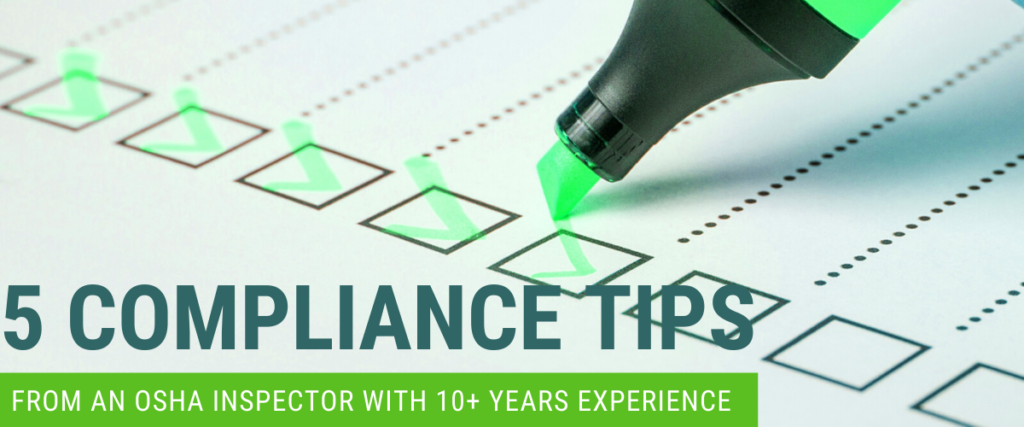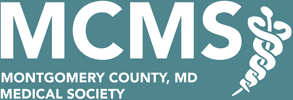
5 Compliance Tips from an OSHA Inspector
Each year, MCMS hosts an OSHA Update for Medical Practices with an expert in the field. This year, we were joined by Anthony Jagielski, a Health Consultant at the Maryland Occupational Safety & Health, our statewide arm of OSHA. He has spent more than a decade inspecting medical practices for OSHA compliance. The following are key insights he provided to attendees during his presentation.
All medical practices must have an exposure control plan (ECP) for their practice which is accessible to employees, accessible to Maryland Occupational Safety & Health (MOSH), upon request, annually reviewed and updated, worksite-specific, and written down. Inaccessible, out-of-date, or unspecific ECPs are common areas where practices are vulnerable to fines.
Tip #1: Your employees are your best tool during the required annual review and update.
The annual review and update that your practice conducts must include:
- Changes in technology which eliminate or reduce exposure to blood borne pathogens (BBPs);
- Consideration and implementation of appropriate commercially available and effective safer medical devices designed to eliminate or minimize occupational exposure to BBPs;
- New or modified tasks and procedures which may expose employees to BBPs;
- New or revised employee positions which may expose employees to BBPs; and
- Solicitation of input from non-managerial employees responsible for direct patient care in the evaluation, identification, and selection of effective engineering and work practice controls.
The employees in your practice in direct patient care and/or who are utilizing engineering and work practice controls are most familiar with potential areas of risk and engineering or work practice controls that can solve them. Utilize their knowledge and familiarity with your practice.
Tip #2: Have a written exposure determination for every employee position in your practice.
The exposure control plan must contain:
- Procedures for evaluation of circumstances surrounding exposure incidents; and
- The method of implementation of:
- Compliance with the standard (e.g., engineering controls, work practice controls, and PPE);
- HBV and HIV research laboratories and facilities, if applicable;
- HBV post-exposure evaluation and follow-up;
- HBV vaccination program; and
- Recordkeeping; and
- Employee exposure determinations.
Employee exposure determinations are often absent or incomplete. Make sure your practice is in compliance! Employee exposure determinations must include:
- A list of all job classifications in which all employees in those job classifications have occupational exposure;
- A list of job classifications in which some employees have occupational exposure;
- A list of procedures and tasks or groups of closely related procedures and tasks in which occupational exposure occurs.
Please note: Employee exposure determinations must be made without regard to use of PPE.
Tip #3: On your annual training documentation sheet, have employees sign-off on their training.
Your practice’s training records must include the date(s) of the training, name(s) and job title(s) of employees attending the training, name(s) and qualifications of the trainer, and a summary of the training. It should be maintained for three years.
One aspect that you can add to these training records is an employee signature. It is a strategy for promoting personal accountability relating to learning contents. Employees who have been required to sign-off on their annual OSHA training have taken explicit action to confirm that they both received the training, and have achieved an appropriate level of familiarity and competency with learning materials.
Tip #4: Your exposure control plan must be work-site specific.
You ECP should document the method of implementation for compliance with the standard (e.g., engineering controls, work practice controls, and PPE), and must be worksite-specific. Here are some examples of work-site specificity:
Example: Container Labeling and Housekeeping Procedures.
Container labeling and housekeeping procedures discussions in the Exposure Control Plan should explicitly detail:
- Procedures for cleaning, including type of approved disinfectants to be utilized;
- Procedures for color-coding and labeling containers, including:
- Name of responsible person; and
- Which items are to be labeled (e.g., containers, laundry, etc.).
- Procedures for handling contaminated sharps;
- Procedures for handling regulated waste, including a definition of what is considered to be regulated waste at the jobsite;
- Procedures for handling sharps containers.
Example: HBV Vaccination Program and Post-exposure Follow-up Procedures.
The HBV vaccination program and post-exposure follow-up procedure discussions in the Exposure Control Plan should explicitly detail:
- Description of the need for antibody testing following the HBV vaccination series for healthcare providers;
- Explanation of the declination statement for those declining the HBV vaccine;
- Information to be obtained and procedures to follow after an exposure incident;
- Information to take to the LHPC following an exposure incident;
- Name and location of the HBV vaccine provider;
- Name and location of the LHCP handling post-exposure evaluation and follow-up;
- Name of the individual to contact in the event of an exposure incident (e.g., Supervisor);
- Procedures for ensuring employees are notified of the LHCP’s written opinion;
- Procedures for ensuring compliance with the recordkeeping requirements.
Example: Personal Protection Equipment (PPE)
PPE discussions in the Exposure Control Plan should explicitly detail:
- Location where PPE is stored;
- Location where PPE is to be worn;
- Person responsible for ensuring PPE availability;
- Procedures for maintaining PPE, including:
- Cleaning;
- Disposal;
- Repair; and
- Type of PPE available.
Tip #5: Utilize MOSH’s free on-site consultation services.
Maryland has a free, voluntary on-site consultation service through Maryland Occupational Safety & Health. These visits are confidential, can be full or limited safety and health surveys, provide free testing, have no citations or penalties, provide training assistance to your practice, and is an entry point to the Safety and Health Achievement Recognition Program.
For more information:
- Call: 410.527.4472
- Fax: 410.527.5678
- Web: www.dllr.state.md.us/labor/mosh/volc.shtml
